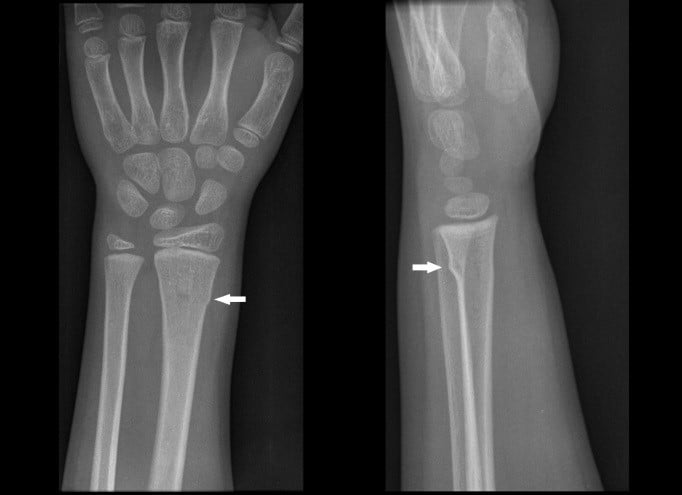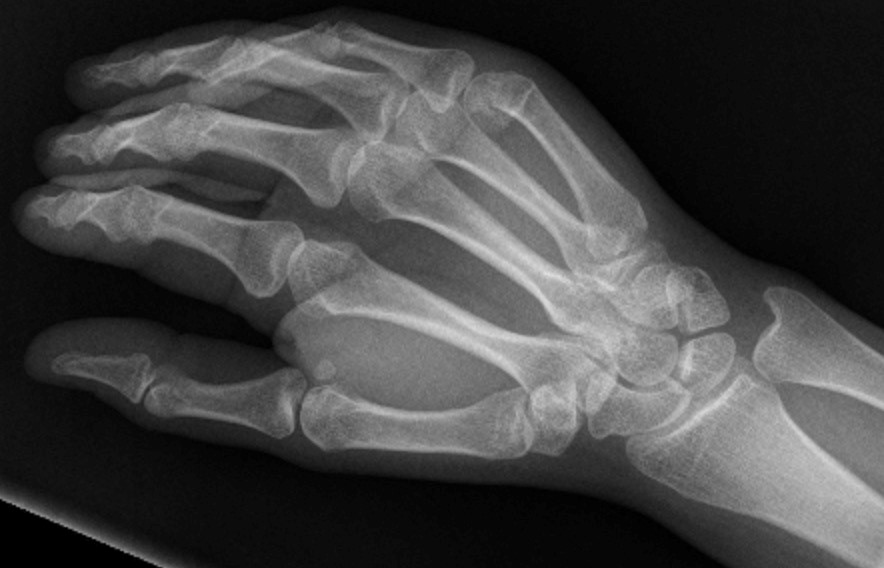A Colles fracture, commonly referred to as a broken wrist, is one of the most frequent types of fractures that occur in the upper extremities. This injury typically involves a break in the larger of the two bones in the forearm, near the wrist joint. Understanding its causes, recognizing its symptoms, and learning about the diagnosis and recovery process can help individuals better manage this condition. In this article, we will explore all aspects of this common injury without relying on abbreviations.

What Is a Broken Wrist?
A broken wrist occurs when there is a crack or complete break in one or more of the bones that make up the wrist. The wrist is a complex structure composed of multiple small bones, along with the two long bones of the forearm: the radius and the ulna. A Colles fracture specifically refers to a break in the radius bone, close to where it connects with the wrist. This type of fracture often results in a characteristic “dinner fork” deformity due to the displacement of the broken bone.
Common Causes of a Broken Wrist
There are several common causes of a broken wrist, and understanding these can help in preventing such injuries:
- Falls onto an Outstretched Hand: One of the most frequent causes of a broken wrist is falling onto an outstretched hand. When people trip or slip, their natural reflex is to extend their arms to break the fall. This action places significant stress on the wrist, leading to fractures.
- Sports Injuries: High-impact sports like skateboarding, snowboarding, and contact sports such as football or basketball carry a higher risk of wrist fractures. These activities often involve sudden impacts or falls.
- Car Accidents: During car accidents, the force exerted on the body can cause severe trauma, including fractures to the wrist. Airbags and steering wheels can contribute to these injuries if the hands are positioned incorrectly during impact.
- Osteoporosis: Osteoporosis weakens bones, making them more prone to fractures. People with this condition may sustain a broken wrist even from minor falls or everyday activities.
- Repetitive Stress: Activities that involve repetitive motions, such as using a jackhammer or playing certain musical instruments, can lead to stress fractures over time.
Symptoms of a Broken Wrist
Recognizing the symptoms of a broken wrist is crucial for seeking prompt medical attention. Common signs and symptoms include:
- Pain: Intense pain at the site of the injury is one of the primary indicators of a broken wrist. The pain may worsen with movement or pressure.
- Swelling: Swelling around the wrist is another telltale sign of a fracture. The affected area may appear visibly larger than usual.
- Bruising: Bruises may develop around the wrist and hand due to internal bleeding caused by the break.
- Deformity: In cases of a displaced fracture, the wrist may take on an abnormal shape, resembling a dinner fork.
- Tenderness: The injured area may feel tender to the touch, and even light pressure can cause discomfort.
- Limited Mobility: Difficulty moving the wrist or fingers is common after a fracture. Some individuals may find it impossible to move the wrist altogether.
- Numbness or Tingling: If nerves are affected by the fracture, numbness or tingling sensations may occur in the fingers or hand.
Diagnosing a Broken Wrist
When someone suspects they have a broken wrist, it is essential to seek medical evaluation promptly. Proper diagnosis ensures appropriate treatment and prevents complications. Here’s how healthcare professionals diagnose a broken wrist:
Physical Examination
The first step in diagnosing a broken wrist is a thorough physical examination. A doctor will assess the appearance of the wrist, looking for signs of swelling, bruising, or deformity. They will also check for tenderness and test the range of motion in the wrist and fingers. During this examination, the doctor may ask questions about how the injury occurred and whether there is any history of conditions like osteoporosis.
Imaging Tests
To confirm the presence of a fracture and determine its severity, imaging tests are necessary. These tests provide detailed images of the bones and surrounding structures:
- X-rays: X-rays are the most commonly used diagnostic tool for fractures. They allow doctors to see the location and extent of the break clearly.
- Computed Tomography Scans: In some cases, computed tomography scans may be ordered to get a more detailed view of complex fractures or to assess alignment issues.
- Magnetic Resonance Imaging: Magnetic resonance imaging is not typically required for diagnosing fractures but may be used if soft tissue damage, such as ligament tears, is suspected.
Treatment Options for a Broken Wrist
The treatment approach for a broken wrist depends on the severity of the fracture, the patient’s age, and overall health. Treatment options range from non-surgical methods to surgical interventions.
Non-Surgical Treatment
For less severe fractures, non-surgical treatments are often sufficient:
- Immobilization: A cast or splint is applied to keep the wrist stable while the bone heals. This method is effective for non-displaced or minimally displaced fractures.
- Pain Management: Over-the-counter pain relievers, such as ibuprofen or acetaminophen, can help manage pain and reduce inflammation.
- Ice Therapy: Applying ice packs to the injured area can reduce swelling and alleviate discomfort.
Surgical Treatment
In cases of severe fractures or when the bone is significantly displaced, surgery may be required:
- Internal Fixation: Metal pins, plates, or screws are used to hold the bone fragments in place while they heal. This procedure restores proper alignment and stability.
- External Fixation: In some instances, an external device is attached to the bones using pins inserted through the skin. This method provides additional support during healing.
Recovery Process After a Broken Wrist
Recovering from a broken wrist requires patience and adherence to medical advice. The healing process varies depending on factors such as age, overall health, and the severity of the fracture. Below are key aspects of the recovery journey:
Initial Healing Phase
The initial healing phase typically lasts six to eight weeks. During this time, the focus is on allowing the bone to mend properly. Patients are advised to avoid putting weight on the injured wrist and follow all instructions regarding immobilization devices. Regular follow-up appointments with the doctor are essential to monitor progress.
Physical Therapy
Once the bone has healed sufficiently, physical therapy becomes a critical component of recovery. Physical therapists design exercises to restore strength, flexibility, and range of motion in the wrist. These exercises help prevent stiffness and ensure the wrist regains full functionality.
Long-Term Care
Even after the wrist has healed, long-term care may be necessary to maintain optimal function. This includes continuing prescribed exercises, avoiding activities that strain the wrist, and addressing any underlying conditions that contributed to the fracture, such as osteoporosis.
Tips for a Smooth Recovery
To facilitate a smooth recovery, consider the following tips:
- Eat a balanced diet rich in calcium and vitamin D to promote bone healing.
- Avoid smoking, as it can slow down the healing process.
- Follow all medical advice and attend scheduled appointments.
- Gradually reintroduce daily activities as recommended by your healthcare provider.





